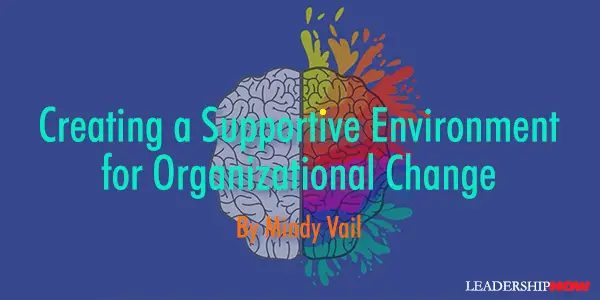
Creating a Supportive Environment for Organizational Change

TODAY, change management is an integral part of organizational strategy. Yet, change in any form or context tends to challenge our sense of stability and security. Whenever new concepts, methods, or ways of thinking are introduced, they are bound to come up against resistance. Apprehension about the future impedes progress and undermines well-conceived change efforts.
What’s more, in any change initiative, making assumptions regarding people’s perspectives toward a given change can undermine its success. Picture a runner at the start line of the Boston Marathon. While this runner is prepared to sprint when the starting gun fires, those further back are unaware that the race has begun and, given their position in the pack, will start out at barely a jog. In change management, assuming everyone is prepared at the same time to move at the same pace can result in miscommunication, resistance, and disengagement. When all team members that the change impacts haven’t been adequately informed or involved in the process, it leads to disparities in understanding and engagement.
Effective leadership during times of change involves recognizing and managing one’s own reactions while also understanding and empathizing with the responses of others. It requires that leaders acknowledge employees’ struggles, facilitate open communication, and offer support. Conversely, turning a blind eye to these issues only erodes trust and morale.
Successful leaders recognize their role in setting the tone, establishing the vision, and providing direction and support to their teams through a change initiative. They understand that their actions and behaviors significantly influence how change is perceived and embraced within the organization.
It’s helpful to know that, despite their differences in approach and methodology, all change management initiatives share common elements. While guiding change demands a methodical strategy and meticulous preparation, employing a thoughtful approach throughout enables leaders to strengthen their own and their teams’ resilience. In doing so, they’re able to promote change not as a disruptor of stability but as a catalyst for the organization’s necessary evolution.
To create a supportive environment for your change initiative, adhere to these eight recommendations:
- Establish a clear vision and purpose. Similar to a company vision, clearly define the vision and purpose of the change initiative, outlining the desired outcomes and benefits for the organization and its stakeholders. A compelling change vision provides direction and motivation, rallying support for the change effort.
- Engage stakeholders early and often. As with any significant initiative, engage key stakeholders throughout the change process, soliciting their input, addressing concerns, and building buy-in. Stakeholder engagement fosters ownership and commitment to the change initiative, increasing the likelihood of success.
- Communicate openly and transparently. Communication is critical during times of change. Keep stakeholders informed and engaged through regular updates, town hall meetings, and other communication channels. Without over-communicating, be honest and transparent about the reasons for the change, its potential impact, and the expected outcomes. Finding the right balance in communication during change involves several key considerations:
- Identify needs. Understand the information needs and preferences of your stakeholders. Tailor your communication approach to meet these needs, whether it’s providing detailed updates for some or high-level summaries for others.
- Determine the appropriate frequency of updates. Too much communication can lead to information overload, while too little can leave stakeholders feeling uninformed. Find a cadence that keeps stakeholders engaged without overwhelming them.
- Ensure clarity and conciseness. Make sure messages are clear, concise, and easy to understand. Avoid jargon and technical language and focus on conveying information in a straightforward manner.
- Engage in two-way communication. Establish avenues for two-way communication, enabling stakeholders to inquire, offer feedback, and express concerns. This fosters engagement and helps address any misunderstandings or issues that may arise.
- Employ feedback mechanisms. Offer channels for sharing feedback to gauge stakeholder satisfaction with communication efforts. Regularly solicit feedback and adjust as needed to improve the effectiveness of communication.
Remaining honest and forthcoming with information pertaining to organizational change helps to mitigate fears and anxieties. It can promote a mindset organization-wide that better embraces change as a natural and necessary part of growth and evolution.

Mindy Vail has over two decades of experience in leadership development, change management, education, and public speaking. Working with emerging leaders and veteran executives, her focus is cultivating a growth mindset and fostering resilience. Her book, The Mindshift Effect: Where Change Management Is Redefined and Leadership Is Defined provides inspiration for leading meaningful organizational change. Learn more at themindshifteffect.com

![]()
Posted by Michael McKinney at 08:09 PM
Permalink
| Comments (0)
| This post is about Change
Discover more from reviewer4you.com
Subscribe to get the latest posts to your email.







